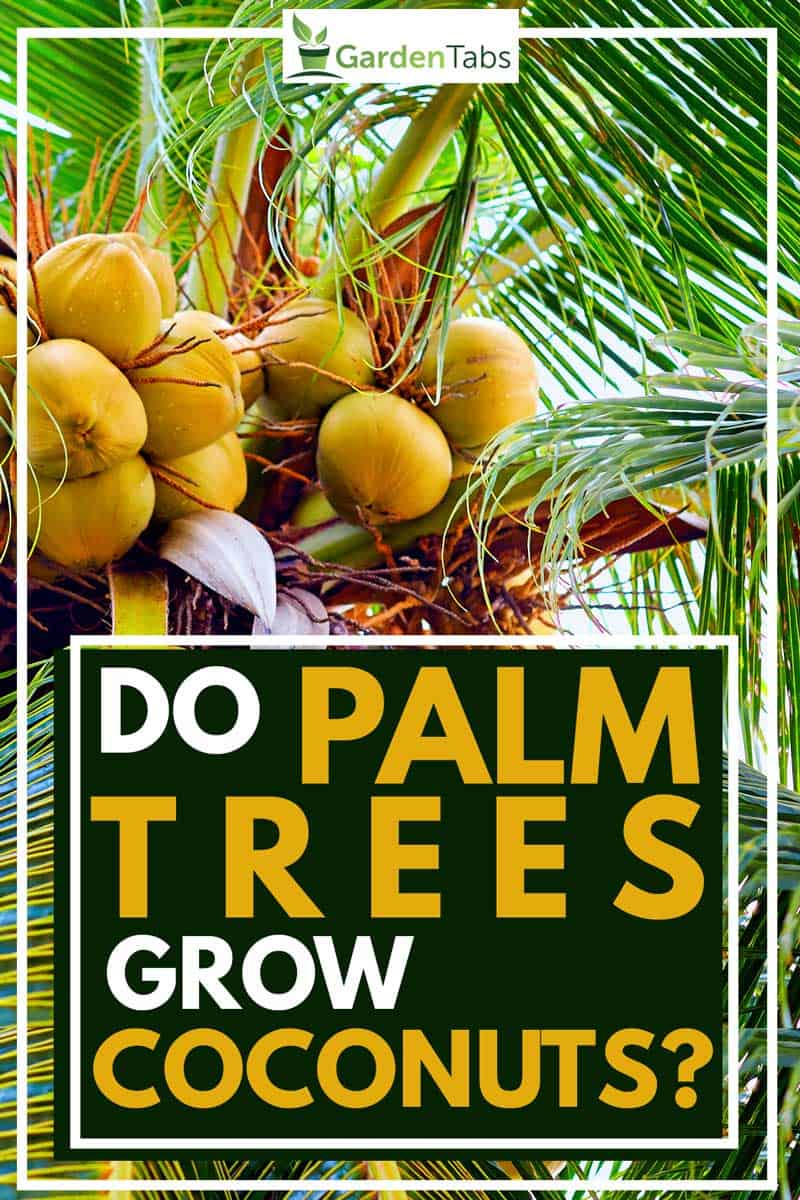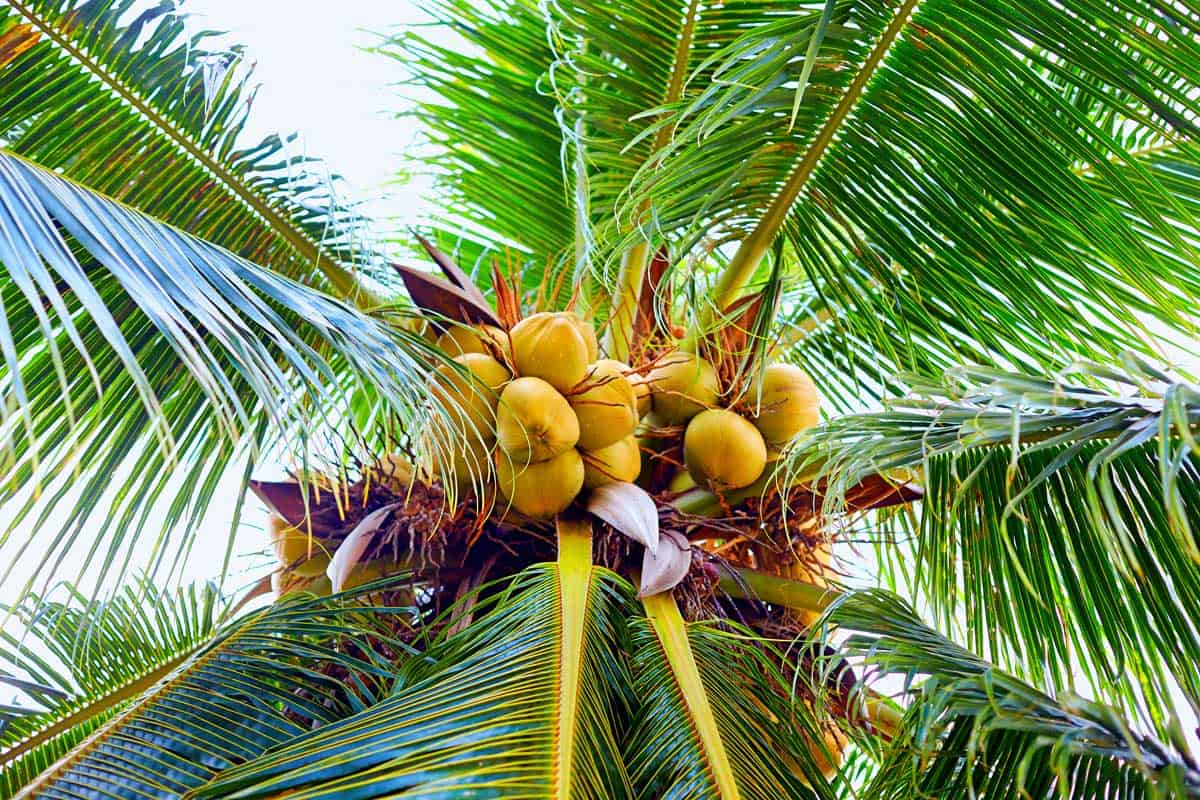 Palm trees have retained popularity over the years due to their aesthetically pleasing growth and their commercialized ability to grow coconuts. But just how common are palm trees that grow coconuts, and how many kinds of palm trees are there? We've done the research, and we have the answers for you!
Palm trees have retained popularity over the years due to their aesthetically pleasing growth and their commercialized ability to grow coconuts. But just how common are palm trees that grow coconuts, and how many kinds of palm trees are there? We've done the research, and we have the answers for you!
Some palm trees do grow coconuts, but not all of them do. There are 2,600 different kinds of palm trees, but only one species actually grows coconuts, and it's typically called the coconut tree.
If only one kind of palm tree grows coconuts, why does that one type seem to be so widespread? Is there more than one kind of coconut? Keep reading to find out!
Which Palm Tree Produces Coconuts?
Only one of the 2,600 kinds of palm trees actually produces coconuts. Surprising, right? So many different movies, books, TV shows, and other kinds of media so show palm trees growing coconuts, so it seems shocking that coconuts could only grow on one kind of tree out of the vast number of palm species.
But it's true! The only palm tree that produces coconuts is called (get ready for it) the coconut tree! The scientific name for it is Cocos Nucifera, and it's actually the only surviving species of the genus Cocos. Pretty impressive! There are, however, two commonly recognized coconut trees in that genus. The tall coconut tree, and the dwarf coconut tree.
Within the tall coconut tree and dwarf coconut tree are several different varieties of trees that grow in different locations. The coconuts they grow vary in shape, size, and color. Each kind, depending on health and age, will also produce coconuts in different numbers and with different frequencies.
How Many Types of Coconuts Are There?

There is one species of coconut palm. Within that species, there are two primary types of coconut tree, the tall coconut tree and the dwarf coconut tree. However, according to the Library of Congress, there are more than 80 varieties of trees themselves that fall underneath the tall and dwarf categories.
There may be just one species of the coconut tree, but because of the many different varieties, there are many different kinds of coconuts. The taller variety of coconut tree can cross pollenate, which means it can share genetic information with other trees and that its flowers need pollen from other trees in order to bear fruit and reproduce.
This is why there are only two types of palm tree (tall and dwarf), but so many different kinds of coconuts. Because of this, it's almost impossible to list them all. But, we can give you a list of some of the most prominent kinds!
- West Coast Tall Coconut - This variety grows around 80 coconuts per year, and is able to tolerate most types of soil.
- East Coast Tall Coconut - This coconut tree grows around 70 coconuts per year, and grows best in sandy soil that drains well.
- Macapuno Coconut - This coconut is prominently used in desserts, and is considered to be a kind of mutant coconut very high in nutrition.
- King Coconut - These coconuts grow in clusters of up to 30 and are full of vitamins and other nutrients. Surprisingly, they are orange in color.
- Malayan Yellow Dwarf Coconut - One of the coconut trees with the highest annual fruit count and maybe the most commonly grown dwarf coconut tree on the planet.
- Fiji Dwarf Coconut - Fiji Coconuts are very disease resistant, and because of their wide base and long fronds, they are aesthetically desireable in many landscapes. If you have palm trees in your yard, click here to learn about when to trim them back!
- Maypan Coconut - Resistant to Yellowing Disease, the Maypan palm is also resistant to cold, and it grows fairly large-sized coconuts.
What Does A Coconut Palm Tree Look Like?

Whether it's been live-action or a cartoon, if you've ever seen a palm tree in a movie, chances are it is either a coconut tree or it's been patterned after one. But coconut trees are just a type of palm tree, and they are the only kind of palm tree that actually grows coconuts. Out of all the 2,600 different kinds of palm trees, only the one species, aptly named the coconut palm, is capable of growing the famous coconut.
Within that one species of coconut tree, there are two main trees with the most aesthetic differences; the regular coconut tree and the dwarf coconut tree. They have quite a few things in common, and just a couple of differences.
Most coconut trees grow a slim, single trunk, covered in a fairly smooth light brown bark. Growing from the top are elegant green fronds that are frequently featured in decor, and on a variety of different fabrics and surfaces.
These airy fronds feature evergreen leaves that can each grow up to three feet in length. The regular-sized coconut tree will grow up to 60 feet tall, with a canopy spread of 25 feet. The dwarf varieties will generally only grow up to 10 to fifteen feet tall, which may be preferred due to its more manageable height.
Where Do Coconut Palm Trees Grow?
It may surprise you to find out that the coconut tree isn't solely confined to the sunny, sandy beaches that are so prevalent in our media. While they can be found anywhere in the world, they will only grow naturally in certain locations.
Growing in many tropical coastal areas, rainforests, and other locations near or around the Equator, the coconut tree is a staple of life and is commonly grown as one of their most prominent agricultural products in those areas. These coconut trees are most commonly grown in the following locations:
- Australia - Frequently grown on the northern coast of the continent.
- Bermuda - Fewer trees do well here due to the cold and high presence of limestone in the soil. However, the trees near the coasts and marshes fare somewhat better. Click here to read about the cold temperatures palm trees can handle.
- India - There are so many coconut trees in India that, for a while, it was difficult to clear land because of the permits needed to clear trees. It has since been reclassified as a palm, and no longer needs special clearance to be cut down.
- Indonesia - Indonesia produces the world's largest number of coconuts compared to anywhere else where coconuts are commercially produced.
- Maldives - Coconut trees have historically been used here in many different capacities, from infrastructure to food production. This consistent and thorough use of the coconut tree has made it the national tree of the Maldives.
- Middle East - Typically the Tall West Coast variety of coconut tree, since they are more drought resistant. They are planted in many different tourist areas.
- The Philippines - The Philipines used to the number one producer of coconuts until they were overtaken by Indonesia. Around 25% of farmland there is used for the production of coconut trees.
- The United States of America - Palm trees grow naturally in Florida and are grown in several other states along warmer coastlines commercially.
Are There Male And Female Coconut Trees?
Coconut trees are a special case, and they produce both male and female flowers. This means that they are a monoecious species. Tall coconut trees are pollinated by other trees, while many dwarf coconut trees are self-pollinating, which makes them homozygous.
What Fruits Grow On Palm Trees?
- Acai Palm - Rich in antioxidants, the Acai Palm's acai berries are a delicious fruit loaded with fiber and healthy fat, making it an all-around healthy snack.
- African Oil Palm - The fruit on this tree is red, and grows in bunches similar to grapes. It is pressed for oil, which is where palm oil comes from.
- Coconut Palm - The coconut grows on only one species of tree, but has multiple varieties that give it different shapes and colors. With multiple health benefits, coconut use not only used on cooking but health products as well.
- Date Palm - Dates Palms are grown and cultivated specifically for their sweet fruit. They grow in large bunches and are very easy to spot from the ground.
- Guadalupe Palm - Reported to taste similar to dates, Guadalupe Palm fruit can be eaten cooked or raw. You can actually make jellies out of it!
- Palmetto Palm - The Palmetto Palm, like the Coconut Palm, is the only one of its species. It has several purported health benefits, such as inflammation reduction, hair loss prevention, and a boost to urinary tract health.
- Peach Palm - Peach Palm fruit, when raw, is used to feed livestock, as it has a very strong acidic taste. When dried, it can be ground into a flour that can be used in cooking.
- Pindo Palm - This fruit grows in groups, similar to a bunch of grapes. Very high in pectin, this juicy fruit can be eaten, and it is often used in winemaking, which has earned the tree the moniker "Wine Palm".
Can You Eat The Fruit From Any Palm Tree?

None of them will poison you, so yes, all palm fruits are technically safe to eat. However, many of them are not best consumed without preparation. Knowing the kind of palm fruit you're eating and the best way to prepare it will greatly increase your chances of enjoying your find.
